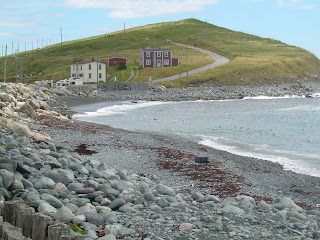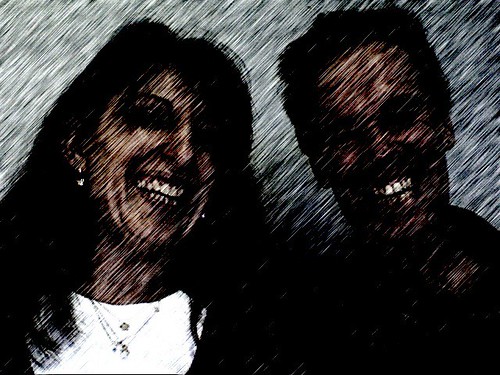Digging up the past in Ferryland
Last week we were over on the east coast visiting friends and taking in the opening night of the George Street Festival in St John's. At the end of the trip we went past way down the Avalon Peninsula so that Michele could go see some puffins and whales (I'd seen a small whale the week before from binoculars at Bottle Cove, so I waived the whale trip and spent a couple of hours walking around the Bay Bulls wharf area and reading a bit of Newfoundland history. The following day we visited Ferryland, the colony of Avalon, settled by a British group in 1621.
While the peninsula and surrounding areas have been settled continuously (with the exception of an especially harsh winter late in the 17th century), the original buildings had long been lost to sight and memory. This changed in the late 1980s when a team from the Memorial University of Newfoundland began excavating the area. To date they have have recovered more than a million artifacts, ranging from a pair of gold rings to some locally minted (in lead) coins, via a wide range of pottery from Devon, Portugal and China, and much else besides. An impressive sample is on display in the information centre at the site. Local people have given permission for the excavations to proceed, some whom take a very active interest in the work.
We paid our entrance fees and got the written guide to the excavations, and followed through the more than 20 sub sites of the overall dig. After that we explored the downs at the end of the peninsula and walked to the lighthouse that looks out over the North Atlantic Ocean.
You can take a Virtual Walking Tour of the site here
While the peninsula and surrounding areas have been settled continuously (with the exception of an especially harsh winter late in the 17th century), the original buildings had long been lost to sight and memory. This changed in the late 1980s when a team from the Memorial University of Newfoundland began excavating the area. To date they have have recovered more than a million artifacts, ranging from a pair of gold rings to some locally minted (in lead) coins, via a wide range of pottery from Devon, Portugal and China, and much else besides. An impressive sample is on display in the information centre at the site. Local people have given permission for the excavations to proceed, some whom take a very active interest in the work.
We paid our entrance fees and got the written guide to the excavations, and followed through the more than 20 sub sites of the overall dig. After that we explored the downs at the end of the peninsula and walked to the lighthouse that looks out over the North Atlantic Ocean.
You can take a Virtual Walking Tour of the site here



































1 Comments:
Thanks for sharing the pictures as well as the link to the site. I was interested to find out how the project got started. Also fun to find out that Ferryland postal codes are the lowest alphanumerically in Canada. Best regards to both of you! Kathy
Post a Comment
<< Home